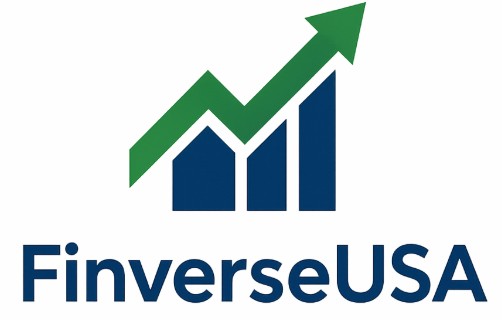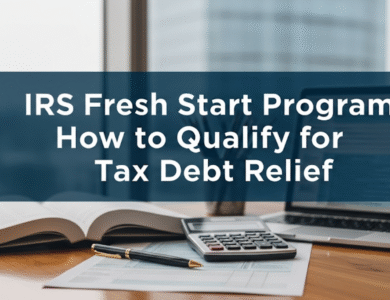
Retirement Plans for Millennials & Gen Z: Beginning the process of planning for retirement can seem daunting, particularly when you’re balancing student loans, increasing cost of living and an uncertain job market. But here’s the truth: the sooner you start, the more your money reigns supreme through the magic of compound interest. Whether you are a Millennial playing catch-up or a Gen Zer just beginning to work, you need a guide to help you decide on the best retirement plans for you.
The retirement terrain is much different for today’s generation than it was for your parents. Defined-benefit pensions are practically an endangered species, Social Security benefits are a bit of a crapshoot and you are probably going to have to finance much of your retirement yourself. All of which makes picking the right retirement plan even more important.
Why Millennials and Gen Z Need to Rethink Retirement Strategies
Your generation has specific financial challenges that generations before did not face. Levels of student debt have exploded, housing takes up bigger chunks of paychecks, and traditional career trajectories are less certain. The bottom line: All of these factors ensure you need retirement strategies that are flexible, tax-efficient and provide potential for growth.
The good news? You have something on your side that’s more precious — time. Getting a jump on saving for retirement in your 20s or 30s gives your money decades to grow. And relatively small investments made consistently can grow to relatively large amounts by the time you retire.
Best Retirement Plan Choices for Millennials and Gen Z
The 401(k): How A Tax Dodge Became The Foundation Of Retirement Savings
The 401(k) is still the most popular employer-sponsored retirement plan — and for good reason. These plans have several attractive features that make them an especially good choice for younger workers.
Traditional 401(k) Benefits:
- You pay taxes on the money that comes out of your paycheck into the account as you withdraw it later
- A bunch of employers have matching contributions (free money!)
- High contribution limits enable you to save a lot
- No hassle with automatic payroll deductions
Roth 401(k) Benefits:
- After-tax contributions lead to tax-free distributions during retirement
- No lifetime required minimum distributions
- Tax diversification for retirement planning
- Especially useful if you anticipate a higher rate of taxes in retirement
Action: The wisest decision is to immediately participate in your employer’s 401(k) plan. Most financial experts recommend contributing at least enough to get your full employer match. If your employer matches 50% of contributions up to 6% of your salary, you should contribute, at a minimum, the 6% that ensures you get that full match.
Also Check – Best Home Insurance Providers in 2025
IRAs for Financial Freedom and Control
IRAs provide more options and control for investment than employer plans. They’re great for freelancers, gig workers, or anyone who would like to save more for retirement on top of their 401(k).
Traditional IRA Features:
- Tax-deductible contributions (with income limitations)
- Wide range of investment options
- Contributions allowed until age 70½
- Starting RMDs at 73
Roth IRA Features:
- Growth is tax free and so are the withdrawals when in retirement
- No required minimum distributions
- Contributions can be withdrawn without incurring a penalty at any time
- Maximum contribution amounts apply with some restrictions based on income
Backdoor Roth IRA Strategy: The backdoor Roth strategy can be used by high earners who surpass Roth IRA income limits. With this method, you make a contribution to a traditional IRA (non-deductible) and then convert it to a Roth IRA. The idea here is that you’d have access to the Roth benefits regardless of the income phaseout.
2024 Contribution Limits
Best Retirement Plan For Small Business Owners
| Retirement Account | 2024 Limit | Age 50+ Catch-up | Tax Treatment |
|---|---|---|---|
| 401(k) Traditional/Roth | $22,500 | $7,500 | Pre-tax/After-tax |
| Traditional IRA | $6,500 | $1,000 | Pre-tax |
| Roth IRA | $6,500 | $1,000 | After-tax |
Solo 401(k): Best for Side Hustlers
The Solo 401(k), which is also known as a Self-Employed 401(k), is a good option for freelancers, consultants or anyone else earning self-employment income. This plan permits contributions both as an employee and an employer, and may have very high contribution limits.
Solo 401(k) Advantages:
- Contribution limits higher than those of traditional IRAs
- Loan options available
- Both Roth and Traditional contribution available
- Flexible investment options
This makes it a very attractive option for high-earning freelancers or small business owners, as you can contribute up to $66,000 (or $73,500, if over 50) for 2024.
Also Read – Is Health Insurance Really Worth the Premium?
SEP-IRA: A Simple Retirement Plan For Small Business Owners
SEP-IRAs are simple to establish and maintain, which has made them a favorite of small-business owners and self-employed individuals.
SEP-IRA Benefits:
- Large contributions (as much as 25% of pay or $66,000 for 2024)
- Easy administration with minimal paperwork
- Discretionary contributions based on business income
- Flexible contributions counted as business expense
- No required annual contributions
The biggest downside is that if you have employees, you will have to contribute the same percentage for all eligible personnel, and this could add up in cost as your business expands.
Age-Based Retirement Planning Strategies
Early 20s: Building the Foundation
In your early 20s, you should be concentrating on establishing good financial habits and allowing compound growth to work its magic.
Key Strategies:
- Begin with your employer’s 401(k), particularly if there is a match
- Open a Roth IRA for even more tax-free growth
- Invest through broad market index funds for diversification
- Strive to save 10%-15% of your income for retirement
Even if all you can manage to contribute is $50-$100 per month in the beginning years, those years are everything. For example, a 22-year-old who puts away $100 a month, assuming 7% returns, will have more than $1.3 million by age 65.
Late 20s to Early 30s: Rapid Growth
As your income grows, now is the time to supercharge your retirement contributions.
Key Strategies:
- Boost 401(k) contributions every year, especially after raises
- Maximize employer matching contributions
- Factor in tax diversification of traditional and Roth accounts
- Mix in international and small-cap funds into your investment portfolio
Aim to save 15-20% of your gross income for retirement during this period. This may sound aggressive, but keep in mind that figure includes employer matches, if available, and any Social Security benefits you may expect.
Mid-30s And Beyond: Optimization and Catch-up
When you’re in your mid-30s: Get strategic and prepare for more earning potential.
Key Strategies:
- Think about backdoor Roth conversions if you earn too much
- Determine if you should contribute pre-tax or Roth
- Rebalance your portfolio on an annual basis to keep your allocations on target
- Begin thinking about other retirement goals, such as medical expenses
Investment Strategies for Long-Term Growth
Your investment strategy should be aligned with your time frame and risk tolerance. You have 30-40 years to retirement, and you can afford to take on more risk for the promise of potentially higher rewards.
Asset Allocation by Age
It’s a popular rule of thumb to take 100 and subtract your age as a way to decide on the percent you should have allocated to stocks. But with longer life expectancies and low interest rates, many professionals now recommend more aggressive allocations:
Aggressive Approach:
- 20s: 90-100% stocks, 0-10% bonds
- 30s: 80-90% stocks, 10-20% bonds
- 40s: 70-80% stocks, 20-30% bonds
Low-Cost Index Fund Strategy
For most young investors, a simple portfolio of low-cost index funds offers ample diversification and return:
Core Holdings:
- Total Stock Market Index (60-70%)
- International Developed Markets Index (20-25%)
- Emerging Markets Index (5-10%)
- Bond Index (5-15%, increasing as you get older)
Target expense ratios of under 0.20%. High fees can sting long-term returns, so stick with low-cost options.
Target-Date Funds: Set-It-and-Forget-It Option
These target-date funds shift your asset allocation on autopilot as you move closer to retirement, which is great for hands-off investors. Select a fund that has a target date based on when you expect to exit the workforce (usually near age 65).
Advantages:
- Professional management and rebalancing
- Age-appropriate risk allocation
- Simplicity and convenience
- Low fees are generally the rule in employer plans
Disadvantages:
- Less control over specific investments
- Could be too risk-averse for some investors
- Limited customization options
Tax Strategies for Maximizing Your Retirement Accounts
The tax consequences of what you do can have a major impact on just how effective your retirement savings are.
Traditional vs. Roth Decision Framework
Choose Traditional if:
- You’re in a high tax bracket right now
- You expect to pay less in taxes during retirement
- You want immediate tax deductions
- You want to reduce your current tax burden
Choose Roth if:
- You are in a lower tax bracket now
- You anticipate that you’ll pay more taxes in the future
- You want tax-free withdrawals
- You like having flexibility and no required distributions
Tax diversification for the win: Many experts recommend a hybrid approach, investing in both traditional and Roth accounts.
Advanced Tax Strategies
Mega Backdoor Roth: If your employer’s 401(k) plan permits after-tax contributions and in-service withdrawals, you may be able to contribute a lot more to Roth accounts through the mega backdoor Roth strategy.
Tax-Loss Harvesting: In taxable investment accounts, you’ll want to harvest tax losses on a regular basis to offset gains and lower your tax bill. It’s particularly effective when using index funds to invest.
Roth Conversion Ladders: Convert traditional IRA funds to Roth IRAs during periods of low income, like between jobs or after early retirement, when you can lock in lower tax rates.

Retirement Planning Mistakes to Avoid
Learning from other people’s mistakes can save you thousands of dollars and years of setbacks.
Mistake #1: Waiting Too Long to Begin
Each year you postpone beginning retirement savings is very costly because of the loss of compound growth. The difference between starting at 25 versus 35 is hundreds of thousands of dollars in added retirement wealth.
Mistake #2: Leaving Employer Match on the Table
Not contributing enough to gain your full employer match is akin to declining a raise. This free money should be your top priority after establishing an emergency fund.
Mistake #3: Being Too Conservative
Fear drives many young investors to invest too conservatively. You have decades until retirement, and can tolerate short-term market volatility for the chance to earn higher long-term returns.
Mistake #4: Market Timing
There’s also the issue of market timing; a strategy of consistent investing (dollar-cost averaging) usually leads to better results than trying to time market highs and lows.
Mistake #5: Neglecting Inflation
Purchasing power is eroded by inflation. Your retirement plan needs to account for inflation by investing in assets that historically beat it, such as stocks and real estate.
How to Put Together Your Own Retirement Action Plan
You need a specific plan that applies to your unique situation in order to be successful.
Step 1: Find Your Retirement Number
Start with the 25x rule: Your annual retirement expenses multiplied by 25. If you expect to need $60,000 a year to live on in retirement, then try to have $1.5 million in retirement savings.
Consider using online retirement calculators to see how these scenarios play out with a variety of different contribution levels.
Step 2: Set Up Automatic Contributions
Automate your retirement saving, and you won’t have to rely on willpower to save money instead of spending it. Set up automatic transfers to happen immediately after you get paid.
Step 3: Increase Contributions Annually
Pledge to increase your retirement contributions by at least 1 or 2% annually, or each time you get a raise. This gradual increase is almost imperceptible but has major implications for long-term wealth.
Step 4: Review and Rebalance Regularly
Look over your retirement accounts a minimum of once a year. Rebalance your portfolio to get back to your target asset allocation, and evaluate whether you’re on track to meet your goals.
Step 5: Stay Educated
Keep educating yourself about investing and retirement planning. The financial world is complex, and being aware of it can only help you make better decisions.
The Power of an Early Start: Real-World Examples
Let’s see how starting early affects retirement wealth with some examples:
Scenario 1: Early Starter (Begin at 22)
- Monthly contribution: $300
- Annual return: 7%
- Years investing: 43
- Total contributed: $154,800
- Final balance: $1,378,584
Scenario 2: Late Starter (Begin at 31)
- Monthly contribution: $500
- Annual return: 7%
- Years investing: 34
- Total contributed: $198,000
- Final balance: $1,014,565
Even though the early starter contributed $43,200 less, he or she comes out ahead by $364,019 because of ten more years of compound growth.
Modern Technology and Tools for Retirement Planning
Use the latest tools to make your retirement planning straightforward and efficient:
Robo-Advisors
Robo advisors such as Betterment, Wealthfront and Schwab Intelligent Portfolios provide professional portfolio management for very low fees, which is especially great for young savers.
Retirement Planning Apps
Apps such as Personal Capital, Mint and YNAB help you track if you’re on track for retirement goals while showing the whole picture of your financial life.
Online Calculators
Project different scenarios and contribution levels using retirement calculators from Vanguard, Fidelity and other reliable sources.
Also Check – Top Pet Insurance Plans Every Owner Should Consider in 2025
Frequently Asked Questions (FAQs)
Q: How much should I be saving for retirement in my 20s? A: Try to save 10-15% of your gross pay, including any employer matches. If you can’t get to this right now, start with whatever you can afford, increasing it 1-2 percent a year.
Q: Is it more important to pay off student loan debt or save for retirement first? A: The general rule is to at least contribute enough to get the full employer match (which is free money) and then pay down high interest debt first at those 6%+ interest rates. If your debt carries lower interest, you could fare better by investing because of potential higher returns.
Q: What is the difference between a 401(k) and an IRA? A: 401(k)s are employer-sponsored accounts with higher contribution limits and potential matching, while IRAs are individual accounts with more investment options and flexibility but lower contribution limits.
Q: Should young people be using a Roth or a traditional retirement account? A: Younger people in lower tax brackets typically do better with Roth accounts, since they allow for tax-free growth and withdrawals in retirement. But if you’re in a high tax bracket, a traditional account may be more appropriate.
Q: Can I take money out of my retirement account early? A: Usually withdrawals from traditional accounts before you turn 59½ trigger a 10% penalty plus taxes. You can withdraw your Roth IRA contributions at any time without penalty — but you can’t take the earnings until age 59½ without penalty.
Q: How often should I check my retirement accounts? A: Check on your accounts every three months, but make changes judiciously. Annual rebalancing should do the trick unless there have been major life changes or significant market swings.
Q: What if my employer doesn’t have a 401(k)? A: Open an IRA on your own. If you are self-employed or generate freelance income, you may want to consider a Solo 401(k) or SEP-IRA for even higher contribution limits.
Q: Do I need a financial advisor? A: For most young investors with simple situations, low-cost index funds and target-date funds work just fine. If you have complicated financial situations, or you want comprehensive planning, find a fee-only advisor.
Your Path to a Great Retirement Begins Now
Building wealth for retirement isn’t easy, but it doesn’t have to be complicated. The key is to start early, be consistent and make wise choices about accounts and investments. No matter if you’re 22 or 32, the best time to start was yesterday — and the second-best time is now.
Remember, retirement planning is a marathon, not a sprint. Focus on creating sustainable habits, maximize employer benefits, and let compound interest work its magic. Small, consistent actions over decades will enable you to retire comfortably and on your own terms.
Your future self will thank you for every dollar you invest today. Start by establishing a retirement account, making automatic contributions and setting off on the road to financial freedom. The journey to a secure retirement begins with a single choice to start, and that choice can transform your entire financial future.

